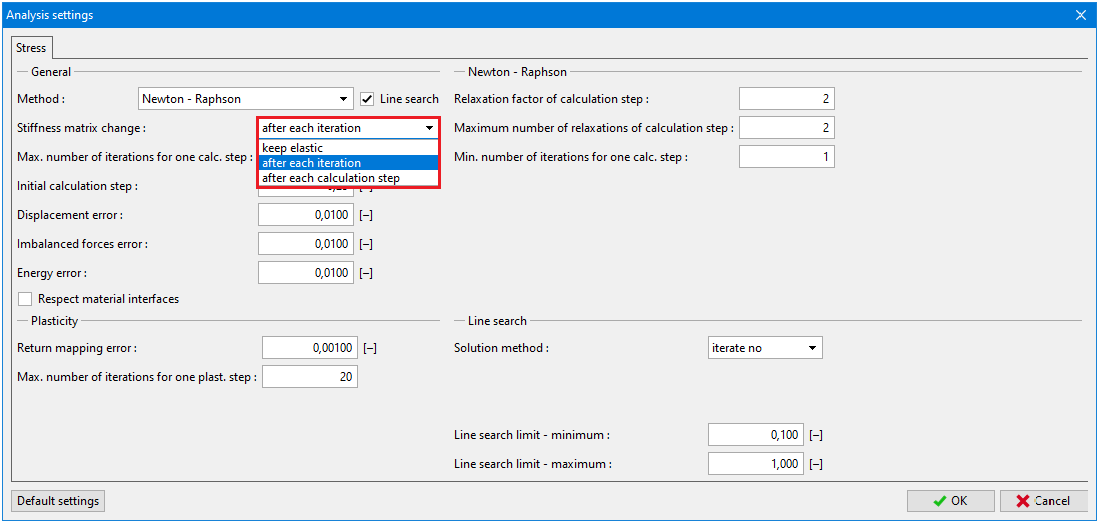Change of Stiffness Matrix
The full Newton-Raphson method assumes that the instantaneous tangent stiffness matrix is formed at the beginning of each new iteration.
Forming a new tangent stiffness matrix only at the beginning of a new load increment leads to the so-called modified Newton-Raphson method.
If the stiffness matrix is formed only once at the beginning of the solution analysis we obtain the so-called initial stress method.
Individual methods can be selected from the "Analysis settings" dialog window section "Stiffness update". The corresponding settings are:
- Keep elastic - initial stress method,
- Each iteration - full Newton-Raphson method,
- Each load step - modified Newton-Raphson method.
The default setting assumes the full Newton-Raphson algorithm (stiffness update after each iteration). Note that the formulation of the stiffness matrix is consistent with the stress update algorithm. Such a formulation then ensures quadratic convergence of the full Newton-Raphson (NRM) unlike the modified NRM or the initial stress method that, in comparison with the full NRM, requires considerably more interactions to attain equilibrium.
On the other hand, it is fair to mention that the computational cost per iteration is mainly determined by the calculation and factorization of the tangent stiffness matrix. Assuming elastic response of a structure it is clearly meaningless to set up the structural stiffness matrix more than once (stiffness update - keep elastic). On the contrary, increasing the degree of nonlinearity suggests more frequent stiffness reformulations (stiffness update - Each iteration).
 Newton-Raphson method - stiffness matrix update options
Newton-Raphson method - stiffness matrix update options